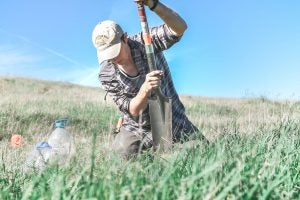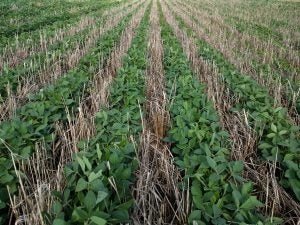This article was written by Mark Muller, Executive Director of the Regenerative Agriculture Foundation. He has spent over 20 years working in agricultural conservation and effective federal food and agricultural policy.
Recently, Sen. Cory Booker highlighted how the U.S. Department of Agriculture can become a powerhouse in the fight against climate change. Booker’s new Climate Stewardship Act would increase funding for and expand USDA programs that engage farmers, ranchers, and other land stewards in conservation. As this bill moves forward, the USDA doesn’t need to wait to take action to set us on a better course.
Currently, the Biden administration’s signature climate-smart agriculture policy, Climate 21, remains narrow in scope, directing the USDA to create a carbon “bank” that would compensate farmers for capturing and storing carbon through soil management. It would also measure carbon reductions as credits and allow businesses to offset their own emissions by purchasing credits.
Recognizing farmers and ranchers as key drivers of climate solutions is a big step in the right direction, but researchers and policy experts point out that carbon banking is not a “silver bullet” solution. Reducing greenhouse gases in the atmosphere has long been, and must remain, a central goal, yet we also need to face the reality that global temperatures will continue to rise for decades even if we drive down emissions. Yes, let’s continue to develop the science and practices that support agricultural carbon sequestration, and let’s recognize that agriculture has so much more to provide.

A holistic approach to climate-smart agriculture addresses the climate crisis while also meeting demand for food production, clean water, and thriving rural economies. Some great innovations that support these objectives receive far too little notice. The USDA should seek insights from innovative land stewards, particularly Indigenous communities and people of color, many of whom have long grown and consumed food in ways that benefit both their communities and land. This approach to regenerative agriculture — a land management system that supports the entire ecosystem — allows farmers to grow food, fuel, and fiber while enriching, instead of depleting, the soil and environment.
In its best form, regenerative agriculture is informed by the latest science as well as traditional Indigenous practices and incorporates the unique needs of the specific farmer, their land, and the local community. There are a wide variety of techniques and approaches that use regenerative agriculture principles to ensure production that benefits both farmer and land. For instance, instead of conventional tillage, farmers can use low-till practices that maintain ground cover and build carbon-rich, nutrient abundant soils. Renowned regenerative farmer Gabe Brown has taken this concept several steps further and incorporates multi-species cover crops and grazing livestock in with his row crops.

Our taxpayer dollars should actively support a broader diversity of farms that employ these regenerative methods, especially small farms that don’t have as many resources to invest in new equipment and new methods as larger businesses might. The USDA already has several programs that reward farmers for implementing regenerative practices through the Natural Resources Conservation Service. With more funding and technical assistance, these programs can become more effective vehicles for driving climate-resilient agriculture. Furthermore, we know that farms with better soil health are less likely to require crop insurance payments and disaster assistance, and a diversity of leading agricultural and environmental organizations are actively supporting crop insurance policies that drive positive outcomes and reduce risk.
» Related reading: Agriculture and race: The complexities of rhetoric and reaction
We must encourage diversity not only in size and type of farm, but also diversity among farmers themselves. The farming systems of the future will be built on more farmer wisdom of the interactions among soil, water, plants, and livestock, and this requires more farmers. The recently passed $5 billion package — including programs like debt relief, grants, and educational opportunities for Black farmers and other socially disadvantaged farmers — is a great start to getting innovative farmers back on the landscape and recognizing the insidious role of historic racism in USDA policy.
To be sure, this approach to supporting and scaling independent farmers’ practices requires a deep overhaul of the current system. But the scale of our climate crisis, as well as continued farm crises, demands just such an approach to bold, sweeping transformation. With the input of diverse communities, and a broad understanding of the climate challenges ahead, the USDA can help chart a path forward to a regenerative food system that works for all people and for the planet.


